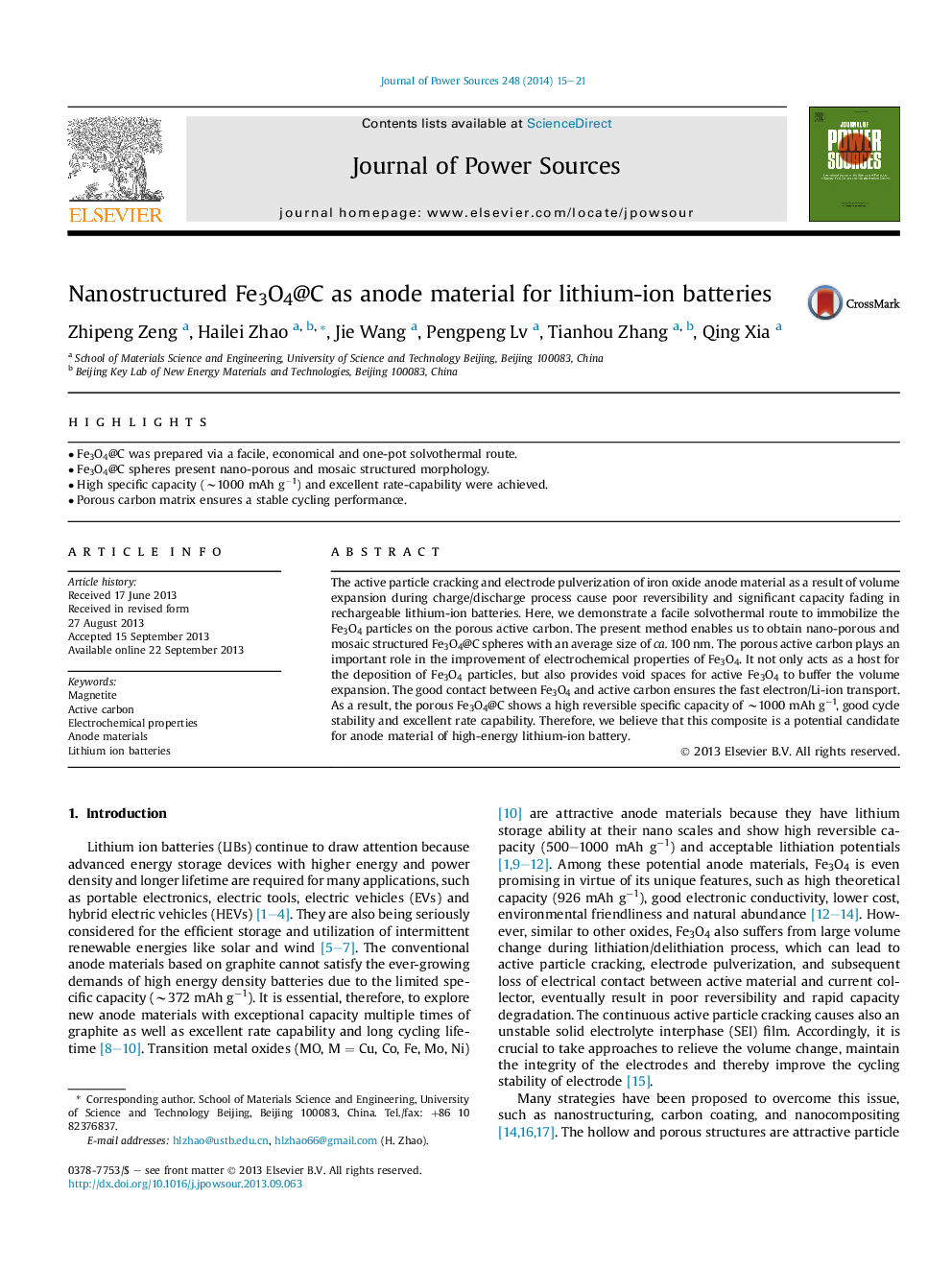| Article ID | Journal | Published Year | Pages | File Type |
|---|---|---|---|---|
| 7738738 | Journal of Power Sources | 2014 | 7 Pages |
Abstract
The active particle cracking and electrode pulverization of iron oxide anode material as a result of volume expansion during charge/discharge process cause poor reversibility and significant capacity fading in rechargeable lithium-ion batteries. Here, we demonstrate a facile solvothermal route to immobilize the Fe3O4 particles on the porous active carbon. The present method enables us to obtain nano-porous and mosaic structured Fe3O4@C spheres with an average size of ca. 100 nm. The porous active carbon plays an important role in the improvement of electrochemical properties of Fe3O4. It not only acts as a host for the deposition of Fe3O4 particles, but also provides void spaces for active Fe3O4 to buffer the volume expansion. The good contact between Fe3O4 and active carbon ensures the fast electron/Li-ion transport. As a result, the porous Fe3O4@C shows a high reversible specific capacity of â¼1000 mAh gâ1, good cycle stability and excellent rate capability. Therefore, we believe that this composite is a potential candidate for anode material of high-energy lithium-ion battery.
Related Topics
Physical Sciences and Engineering
Chemistry
Electrochemistry
Authors
Zhipeng Zeng, Hailei Zhao, Jie Wang, Pengpeng Lv, Tianhou Zhang, Qing Xia,
